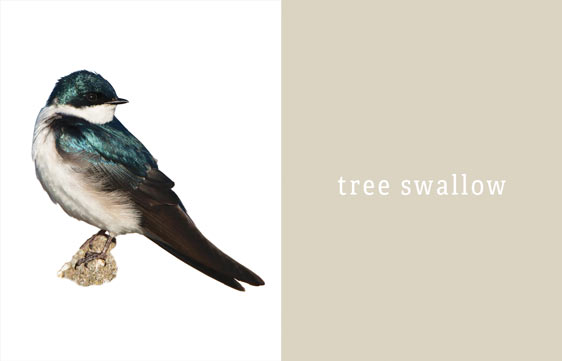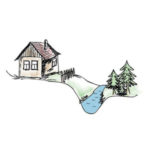
IT HAPPENED 50 YEARS AGO ON THE SHORES OF THE BAY OF QUINTE but if I close my eyes, I can still remember the scene. Daybreak was faintly illuminating the distant horizon. As I brought the cows from their night pasture for the morning milking, tree swallows – thousands of them – were winging in my direction from the eastern sky. The sky was almost black with endless clouds soaring and reeling at great heights as though on a roller coaster. As they neared, I could hear their liquid twittering.
Their journey seemed to end at the utility wires that ran past our house where they eventually settled, dark forms jostling for space, the wires almost sagging beneath their weight. Latecomers fought for perches in one of our willow trees, and the delicate branches waved in the wind from their wings. Thousands – it seemed like millions of swallows – gathered every morning, their numbers falling gradually through the autumn months until all the flocks had migrated.
Some years later, I learned that those swallows had lifted from an 800-hectare cattail marsh only a kilometre away. With the arrival of autumn, these aerial feeders view the wetlands as safe havens to spend the night but during the nesting season, tree swallows have little interest in cattail marshes.
The tree swallow population has been declining by about one percent per year since 1966, according to the North American Breeding Bird Survey. What happened after the 1960s to reduce their numbers so severely? The decline of the tree swallow population is probably a combination of factors: habitat loss, disappearing wetlands in which to roost, changing agricultural practices, competition with other species for nest cavities, and intense use of agricultural pesticides that have reduced their food source. Perhaps climate change was even a factor, or late-spring snowstorms. The tragic sleet storm in April of 2003 that persisted for several days resulted in 100 percent mortality of thousands of early swallow migrants. The ground throughout Watershed country was carpeted with dead swallows and nest boxes were jammed with 30 or more dead birds that had tried to seek shelter and then suffocated.
Historically, tree swallows nest in tree cavities; however, natural nesting sites have slowly disappeared as farmers clear the land and fencerows, manage woodlands, and cut down and remove older trees.
We value the tree swallow for its role in insect control, but their voracious appetite for bugs exposes them to high levels of pesticides and other contaminants, such as PCBs and mercury that enter their systems through bioaccumulation.
Swallows are still hanging on, simply because their numbers were very high to start with, but the day may come when we will lose these little birds. That will be a sad day indeed! We would miss our feathered friends. Not having tree swallows in our backyard would be like losing the loons on our lakes and bays.
Story by:
Terry Sprague
Photography by:
Nicole Watson




